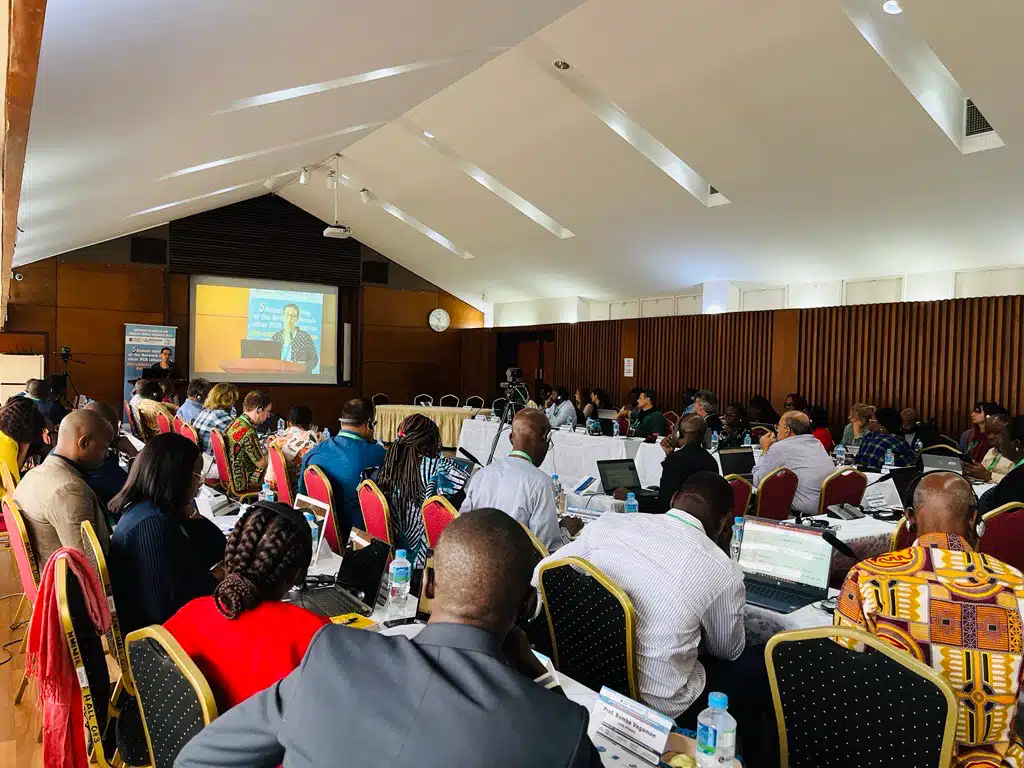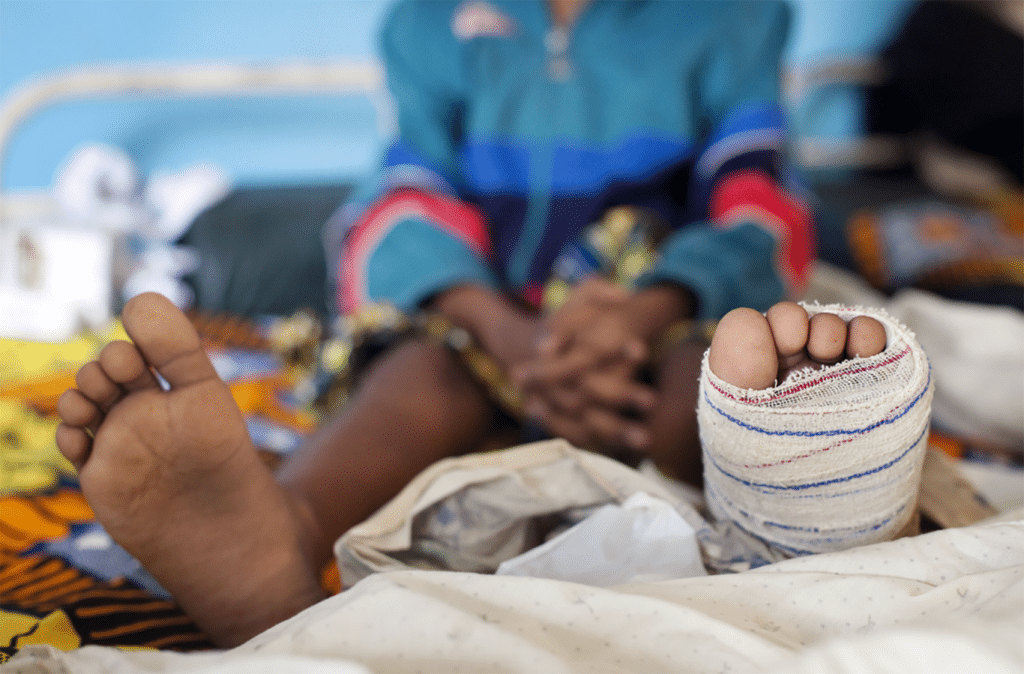The network of Buruli ulcer PCR laboratories (BU-LABNET) in the WHO African Region concluded its fifth annual meeting held at the esteemed Noguchi Memorial Institute for Medical Research in Accra, Ghana on 23–25 October 2023. This meeting marked a pivotal milestone in the fight against Buruli ulcer and other skin-related neglected tropical diseases (skin NTDs) in the WHO African Region: the transition of the network from BU-LABNET to Skin NTD LABNET.
What is BU-LABNET?
Established in 2019 under the auspices of the World Health Organization (WHO), BU-LABNET is a collaboration of 13 laboratories from nine endemic countries, namely: Benin, Cameroon, Côte d’Ivoire, Democratic Republic of the Congo, Gabon, Ghana, Liberia, Nigeria and Togo. The network is supported by WHO, American Leprosy Missions (USA), the Anesvad Foundation (Spain) and the Raoul Follereau Foundation (France). Its primary goal is to enhance the diagnosis of Buruli ulcer using standardized polymerase chain reaction (PCR) testing protocols and external quality assessment programmes. Notably, BU-LABNET envisions expanding its molecular platform to include additional skin NTDs and laboratories, thereby optimizing cost–effectiveness and increasing access to quality-assured diagnosis.
Meeting highlights
The fifth annual BU-LABNET meeting tackled numerous objectives including a comprehensive review of recommendations from the previous (fourth) meeting in 2022; the presentation of laboratory activities associated with integrating skin NTDs other than Buruli ulcer; communication and advocacy planning; and the development of a road map for 2024–2030.
The event brought together over 70 participants from member laboratories, external skin disease experts, national NTD programme managers, officials from the Ghana Health Service and front-line health workers, as well as representatives from partner organizations – Anesvad, American Leprosy Missions and the Raoul Follereau Foundation – demonstrating the global collaborative effort in addressing Buruli ulcer and other skin NTDs. Moreover, the participation of skin NTD experts at national, regional and global levels and representatives from WHO collaborating centres in Spain, Tunisia and Sudan emphasized the importance of the global collective initiative in tackling these diseases. The event was well-supported by WHO NTD focal points from the WHO Country Office in Ghana, the WHO Regional Office for Africa and WHO headquarters.

Discussion and recommendations
Throughout the 3-day meeting, participants discussed laboratory needs and challenges, harmonization of PCR to include skin NTDs other than Buruli ulcer (cutaneous leishmaniasis, leprosy, mycetoma and yaws) and collaborative research studies. Additionally, a meeting was held with partners to discuss their roles in supporting the transition of BU-LABNET to the Skin NTD Laboratory Network (Skin NTD LABNET).
The opening ceremony was a remarkable start to the event. It began with a warm introduction of esteemed guests by Dr Charles Quaye, after which Professor Dorothy Yeboah-Manu, Director of the Noguchi Memorial Institute for Medical Research, delivered a heartfelt welcome address, setting the positive tone for the gathering.
“Where we find one skin NTD, we find another, so there is no need for us to work in silos. Working together, we will be able to leverage the limited resources available to improve the health of our people,” she said.
Dr Sofonias Asrat, lead of the health systems cluster at the WHO Country Office, representing the WHO Representative for Ghana, emphasized the significance of the occasion: “It is gratifying to know that the network is expanding its expertise to cover other skin NTDs. What is needed most is to build the necessary capacity and ensure the provision of reagents.”
The presentations by working groups shed light on efforts to strengthen collaboration between laboratories and national programmes in the areas of specimen collection, storage and transport to member laboratories for testing. The need to enhance collaborative research studies within the network was also discussed. The most significant outcome of the meeting was the transition from BU-LABNET to the Skin NTD Laboratory Network, or Skin NTD LABNET, in alignment with changing global health policy.
“The laboratory is a key component of the skin NTD integration vision; this fifth annual BU-LABNET meeting provides an opportunity to promote the importance of harmonization of procedures towards attaining the targets for 2030 of the WHO NTD road map 2021–2030,” added Dr Sara Eyangoh, Coordinator of the BU-LABNET.
The meeting concluded with the formulation of general recommendations reaffirming the network’s commitment to providing laboratory support to national programmes to address skin NTDs in the WHO African Region.
Recommendations and follow-up
The meeting produced significant recommendations, including changing the network’s name to the “Skin NTD Laboratory Network” (Skin NTD LABNET), maintaining the Coordinating Center at the Pasteur Center in Cameroon and revising the organogram of the new network.
For WHO, the recommendations involve revising the Memorandum of Understanding with the Pasteur Center in Cameroon to include the new network name and terms of reference, advocating for partner engagement and funding, enhancing collaboration between national programmes and laboratories, and compiling and sharing a database of skin NTD programme managers and coordinators to facilitate communication.
The Coordinating Center received recommendations related to developing new terms of reference for the Skin NTD Laboratory Network, preparing a costed work plan for integrating new diseases, harmonizing PCR procedures for new diseases, establishing external quality assessments and finalizing the organogram.
Furthermore, recommendations encompassed coordinating the harmonization of standard operating procedures, implementing external quality assessment, enhancing visibility through strategic advocacy and communication, establishing procedures for the inclusion of new laboratories, developing training tools for skin-NTD diagnostics, and promoting collaborative research studies on prioritized topics. BU-LABNET member laboratories were encouraged to enhance collaboration with national control programmes, commit to harmonized standard operating procedures for new diseases, participate in external quality assessments and research submissions, and actively engage in collaborative research studies.
National programmes were advised to improve collaboration with laboratories, organize training of trainers or refresher courses for sample collection and transport, and explore integrating transport of skin-NTD samples with other national systems.
For partners, the recommendations revolved around supporting the Coordinating Center in achieving the integration objectives, assisting with sample collection in collaboration with member laboratories, and contributing to identifying additional funding sources to sustain the new network’s activities.
The fifth annual BU-LABNET meeting marked a significant step forward in ongoing efforts to improve the diagnosis and management of skin diseases and in fostering access to health in endemic regions.
Source WHO.

